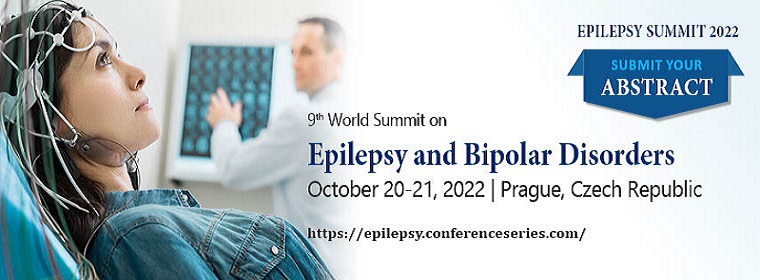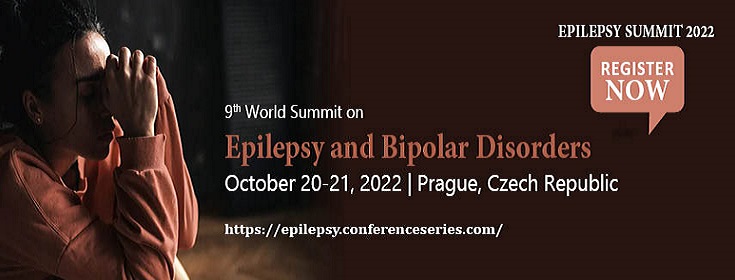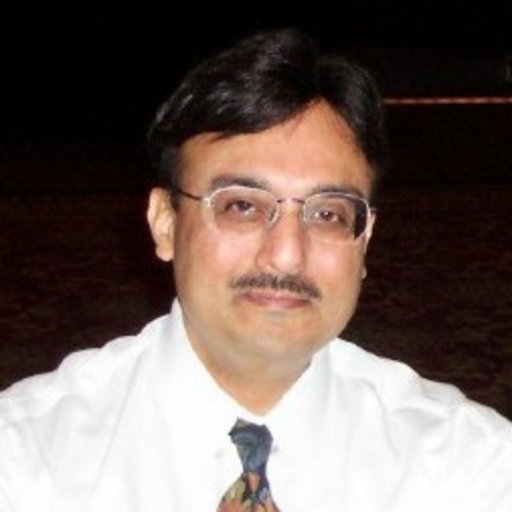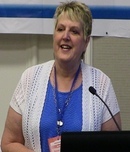Theme:
EPILEPSY SUMMIT 2022
We are organising the "9th World Summit on Epilepsy and Bipolar Disorders (Epilepsy Summit 2022)" during October 20-21, 2022 at Prague, Czech Republic. The Epilepsy Conference is based on the theme “Innovative Study and Advanced Research and Treatment strategies in Epilepsy".
The organizing committee is preparing for an energizing and proficient gathering program including entire addresses, symposia, workshops on an assortment of points, notice introductions and different projects for members from everywhere throughout the world. We welcome you to go along with us at the Epilepsy summit 2022, where you will make sure to have a significant involvement with researchers from all around the globe. Every one of the individuals from Epilepsy Summit 2022 sorting out board of trustees anticipate meets you at Prague, Czech Republic
Epilepsy summit 2022 is the gathering of scientists, neurologists, speakers, professors, business delegates and students all over the world to participate to discover the new novel therapeutics of Epilepsy, where people can get desired knowledge over Epilepsy and recent inventions on Epilepsy Treatment. We are glad to invite you at Epilepsy summit 2022 where you can experience a really sumptuous information and knowledge on Epilepsy management.
Epilepsy summit 2022 gathering unites Speakers and participants and chiefs from various biotechnology and medicinal organizations, real pharmaceutical and gadget organizations, and analysts and trend-setters at the forefront of epilepsy and Central Nervous System (CNS) treatment progresses. Additionally, to make a plan with exceedingly imaginative subjects on epilepsy treatment, helpful advancement, and item improvement. Start demos, share data, go over with prominent identities, and make novel antiepileptic line and most recent indicative strategies at this exceptional occasion
By attending the Epilepsy summit 2022, Prague, Czech Republic can get the insights of:
- Recent trends & techniques of Epilepsy and Bipolar Disorders
- Upgrade yourself with latest innovations to optimize the treatment process of Epilepsy
- Discuss the current challenges & update with future opportunities in improving Epilepsy in future era
- Assess the treatment gaps of various Bipolar disorders
- Update yourself with new strategies of diagnosing of Epileptic Seizures, Bipolar Disorder, Neurological Disorder, Seizure Disorders, Depression and Anxiety, Pediatric Epilepsy other related diseases and define the new treatment strategies
Epilepsy summit 2022 welcomes the multidisciplinary medical professionals, clinicians, and researchers associated with the diagnosis, treatment and management of Bipolar Disorders and allied fields. This Epilepsy summit 2022 is the best platform that would help the Neurologists and professionals to get the insights and latest trends to improve the patients care.
- Neurologists
- Physicians
- Directors
- Pharmaceutical Industries
- Pharmacists
- Students
- Professors
- Associate Professors
- Assistant Professors
- Researchers in Epilepsy
- Epilepsy Diagnosis Centres
- Epilepsy Foundations
Track 1: Epilepsy
Epilepsy could be a neurological condition that affects the Nervous system. Brain disorder or Epilepsy is additionally referred to as a seizure disorder. it's sometimes diagnosed once an individual has had a minimum of 2 seizures (or once one seizure with a high risk for more) that were not caused by some famed medical condition. Seizures seen in epilepsy area unit caused by disturbances within the electrical activity of the brain. The seizures in epilepsy are also associated with a brain injury, genetics, immune, brain structure or metabolic cause, however most of the time the cause is unknown
Track 2 : Geriatric Epilepsy
Epilepsy is that the most typical severe nerve disorder within the old when stroke and dementedness. Older patients most frequently have focal seizures. Diagnosis is difficult attributable to many patient-related, physician-related and investigation-related factors. Treatment is sophisticated by the presence of physiological changes associated with aging, co-morbidities and psychological feature issues similarly as considerations relating to drug interactions and medicine adherence. Seizures is controlled in most patients with low doses of one anti-epileptic drug (AED). old patients area unit a lot of probably to retort to AEDs and at lower doses than needed in younger patients
Track 3 : Epilepsy in Women & Inborn
Some problems with epilepsy square measure specific to Women. Women with epileptic seizures have shut link between hormones and epileptic seizures. Hormones might increase the danger of seizures in Women with epilepsy. ladies with encephalopathy even have lower fertility rates and square measure additional possible to own anovulatory emission cycles, polycystic ovaries, and sexual pathology. Irregular emission cycles, hirsutism, acne, Associate in Nursing blubber ought to prompt an analysis for procreative pathology. This risk is reduced by employing a single medicament at rock bottom effective dose and by providing preconceptional B vitamin supplementation. Breastfeeding is mostly thought to be safe for ladies victimization medicinal drug medications.Catamenial Seizures
- Labour and Delivery
- Inherited epilepsy
- Anticonvulsant medication
- Breastfeeding
- Anti-Epileptic Drugs and the Developing Fetus
- Sodium valproate and Valproic acid
Track 4 : Semiology and Pathophysiology of Epilepsy
Epileptic seizures area unit categorised by a spread of symptoms. Their typical semiology served for an extended time because the major tool to classify encephalopathy syndromes. The signs and symptoms of epileptic seizures embrace the subsequent spheres: sensory sphere, consciousness, motor and involuntary spheres. The predominant clinical options of a seizure verify the seizure classification. the subsequent review offers Associate in Nursing introduction into the semiological seizure classification. This approach permits North American country to higher determine the epileptogenic zone of our patients and to settle on the foremost effective medical or surgery. Pathophysiology could be a union of pathology and physiology that explains the sensible variations in a very morbid state.
Track 5 : Prevention and Management of Neurodegenerative Disorders
The anticipation of neurological infection within the post-infant stage of life and considers both the open wellbeing and person procedures that are utilized for essential avoidance. Auxiliary avoidance is taken into account surely conditions—for example, stroke. To be ready to plan essential preventive techniques, sound epidemiological prove is required. Components to think about are case definition, ponder plan, and therefore the resultant certainty with which elucidation of the comes about are often made. For numerous of the neurological conditions talked about case definition is risky. In stroke, for case, a clinical definition is employed in most investigate cares . For numerous neurological conditions there are point by point clinical case arrangement but when surveying dangers, most prove has been supported case-control considers with the resultant biases. This survey essentially considers stroke, because it's the main explanation for grown-up neurological passing and inability. With current information of chance variables it is the condition in which there's most scope for essential avoidance. A brief survey of a few of of the other major neurological maladies is included to demonstrate regions where work has been detailed or is required. The viewpoint in this survey is that of the created world.
- Model healthy living
- Insist on regular sleep
- Encourage exercise, yoga.
- Regular medical checkup.
Track 6 : Novel Therapeutic Strategies For Epilepsy
Epilepsy may be a common nervous disorder involving recurrent seizures and affecting about 1% of the population worldwide. Despite several antiepileptic drugs and effective therapies available for epilepsy, about 25% of the patients show therapeutic failure. Thus there exists an unmet need for newer antiepileptic drugs targeting newer targets with different mechanisms of action. Current research in epilepsy generally focuses on mechanisms that control neuronal excitability. Recently attention has been focussed on novel targets, their various interactions, and signalling cascades concerning epilepsy. This review summarizes several experimental and clinical findings from literature and explores potential targets which can play crucial role in epilepsy.
Track 7 : Epilepsy in Children
Epilepsy may be a encephalopathy that results in an individual having repeated seizures (previously called fits). About one in 200 children has epilepsy. During seizures, there's abnormal excessive electrical activity within the brain, and this causes the person to convulse (their muscles jerk), fall, or behave strangely (e.g. stare into space, not respond when spoken to). One in 20 children will have at least one seizure during their childhood – often a febrile convulsion, which is a seizure associated with a high temperature. A once-off seizure, febrile convulsions and seizures during acute illnesses are not considered epilepsy. Less than five per cent of youngsters who have febrile convulsions continue to develop epilepsy.
Epileptic seizures are not usually dangerous. However, a person is at risk of being harmed if they are in a dangerous environment when a seizure occurs, for instance if they are in a swimming pool, driving a car or climbing a ladder. Children with epilepsy can usually lead a traditional and active life, but they have to require care with certain activities, like swimming.
Track 8 : Prevention and Management of Epilepsy
There are several medications which will successfully treat and manage epilepsy and help keep seizures to a minimum. Anticonvulsant drugs can work if taken correctly. In some cases, a coffee carbohydrate, high-fat diet referred to as the ketogenic diet could also be prescribed to assist treat children with epilepsy and stop seizures.
Epileptic seizures are often related to particular triggers or changes in your daily habits or routine. Here are some common behaviors and factors that may trigger an epileptic seizure:Stress, anxiety, or other emotional issues
- Alcohol or drug abuse or the process of quitting alcohol or drugs
- Change in sleep schedules, feeling very tired, or significant sleep deprivation
- A change in medications, or skipping or missing a dose of anti-seizure medication
- Something that overstimulates the senses, like lights that flash brightly, watching television, playing video or computer games, or working on a computer
- Hormonal changes in women, often from pregnancy or menstruation
- Mental strain, such as from solving complex problems
Track 9 : Epilepsy Therapeutics
Epilepsy Medications are backbones in controlling epileptic seizures. Individuals with epilepsy regularly encounter cognitive dysfunctioning and some other neurological and neurobehavioral disorders which might show a dynamic course associated with worsening seizure control.
So, novel treatments for seizures and the neurological comorbidities of epilepsy such as Gene therapy, Brain Stimulation, MicroRNA regulation, Stem Cells to the Rescue, Immunotherapy are mostly required. Our Epilepsy and Treatment meetings deal with many issues in the field of epilepsy research and novel therapeutic strategies. Surgical strategies are another measurement in treatment. What's more, the Ketogenic diet, Rehabilitation and the Seizure Altering Devices are additionally having the most extreme significance and Translational examination could be new and developing model that expects to enhance health of a patient by accelerating fundamental science revelations.
Track 10 : Impact of Epilepsy on Daily life
The effect of epilepsy is multifaceted and immense. The capriciousness of seizures forces extreme confinements on way of life and may restrain patient's social interactions.
Epilepsy can affect psychological state , Education, Driving & Recreation, Employment, legal status and Pregnancy. Epilepsy can likewise cause Stigmatization and social avoidance with pernicious impacts on a person's confidence and self-regard
Track 11 : Epilepsy Imitators
Numerous episodic phenomena including sensory, motor, autonomic, and behavioural functions might emulate epilepsy. They might bring about a symptom that resembles a seizure, yet they don't demonstrate the EEG changes in the brain that are normal for an Epileptic seizure.
Some therapeutic conditions like Behavioural, Psychiatric and Psychological, Anoxic and Syncope Seizures, Paroxysmal Movement Disorders imitate certain parts of seizures yet may not be connected with an irregular electrical discharge in brain. Sleep related conditions include body shaking, jerks, rolling and head banging and Migraine related Disorders offer numerous clinical symptoms and fundamental pathophysiological mechanisms of Epilepsy
Track 12 : Chronic Disorder
A chronic condition may be a human wellbeing condition or infection that's diligent or something else long-lasting in its impacts or an illness that comes with time. The term chronic is often connected when the course of the illness endures for quite three months. In the medical field, a chronic condition are often distinguished from one that's intense (later in onset), furthermore, a repetitive condition can backslide over and over, with periods of reduction in between. Chronic illnesses don't fix themselves and are generally not cured completely. Some are often immediately life-threatening, like heart condition and stroke. Others dwell on time and wish intensive management, like diabetes. Chronic illness might affect the looks , physical abilities and independence of an individual’s life
Track 13 : Neurological Disorder
Neurologic diseases and disorders treated by neurosurgeons. Neurological disorders are diseases of the central and peripheral systema nervosum . In other words, the brain, medulla spinalis , cranial nerves, peripheral nerves, nerve roots, autonomic systema nervosum , myoneural junction , and muscles. Many bacterial, viral Enteroviruses, West Nile Virus, fungal, and parasitic infections can affect the nervous system. Neurological symptoms may occur thanks to the infection itself, or thanks to an immune reaction . However, mental disorders are psychiatric illnesses or diseases which appear primarily as abnormalities of thought, feelings and behavior, causing distress or dysfunction comes under neurological disorder
Track 14 : Seizure Disorders
One of the medical conditions that are described by scenes of uncontrolled electrical action in the mind (seizures). Some seizure issue is inherited, yet others are caused by birth abandons or ecological risks, for example, lead harming. Seizure issue will probably create in patients who have another neurological issue, mental conditions, or safe framework issues. At times, uncontrolled seizures can cause cerebrum harm, brought down knowledge, and perpetual mental and physical disability. Determination is by perception, neurological examination, electroencephalogram (EEG), and now and again further developed mind imaging strategies. Treatment is normally by solution, in spite of the fact that in troublesome cases an extraordinary eating regimen or brain surgery might be attempted.
About 50 to 60% (5 to 6 out of every 10 people) will be seizure free after using the first seizure medication tried.
A second seizure medication may help 11 to twenty out of each 100 people become seizure free. Adding more drugs usually doesn’t help the prospect of seizure control.
Focal Seizure with retained awareness. This kind of seizure was beforehand referred to as a basic or simple partial seizure. Focal seizures with a misfortune mindfulness. This kind of seizure may likewise be referred to as focal dyscognitive seizure (beforehand referred to as complex partial seizures)
Track 15 : Pediatric Epilepsy
Neuroinfections influences all the ages. In any case, for kids, an alternate sort of issues that can influence one's youth. Some sort of epilepsy closes after youth. A few sorts of epilepsy are identified with the states of youth that end once a youngster grows up. Around 70% of youngsters with epilepsy in their young age may turn out into the end of kid's development. There are additional seizures, for example, febrile seizures, that happen one-time in young age.
Track 16 : Psychological disorders
The connection of psychiatry / Psychology and epilepsy stays one of the points that are consistently drawing in consideration in therapeutic works since the season of Hippocrates. Mind stress and uneasiness are usually connected with epilepsy and can happen as pre-ictal, ictal, post-ictal or between ictal indications. A portion of the psychotropic medicines is known to be epileptogenic. Consequently, choice of psychotropic drugs ought to be found on their conceivable impacts on seizures and those known to be epileptogenic ought to be kept away from. The most common psychiatric comorbidities found among patients with epilepsy are depression, neuroses (nonpsychotic anxiety disorders) and psychoses. Psychiatry in epilepsy are often defined, in view of their relationship to seizures, into the accompanying classes: pre-ictal side effects (happen before seizure/prodromal states and inclination aggravation), between ictal mental issue happening between seizures, ictal mental manifestations happening amid the seizure occasions, and post-ictal mental indications following seizures. Once during a while, an adjustment in psychological state are often the most indication of non-convulsive epilepsy , for instance , that of complex incomplete or nonappearance kinds of injuries in nerve roots
Track 17 : Drug Delivery to Epilepsy Brain
In treating Neurogenetic disorder with drugs, the point is to diminish the abnormality in brain recurrence and seriousness while limiting poisonous quality to the mind and different tissues. Antiepileptic drugs (AEDs) are typically managed by oral and intravenous (IV) courses, yet these drug delivery process are not generally successful. Drug delivery to the cerebrum is extremely restricted by various natural variables, especially the blood-barrier boundary (BBB), which blocks the capacity of AEDs to enter and stay in the mind. To enhance the viability of AEDs, new medication conveyance techniques are being produced
Track 18 : Animal Model Epilepsy
Epilepsy is a chronic neurological condition characterized by intermittent seizures that affect many individuals around the world. Understanding of the unpredictable components fundamental epileptogenesis and seizure era in transient projection Epilepsy and different types of Epilepsy can't be completely obtained in clinical examinations with people. Thus, the use of suitable creature models is basic. Some of these models reproduce the regular history of symptomatic central Epilepsy with an underlying epileptogenic affront, which is trailed by a clear inactive period and by a resulting time of ceaseless unconstrained seizures
Conference Highlights
- Epilepsy
- Geriatric Epilepsy
- Epilepsy in Women & Inborn
- Semiology and Pathophysiology of Epilepsy
- Prevention and Management of Neurodegenerative Disorders
- Novel Therapeutic Strategies For Epilepsy
- Epilepsy in Children
- Prevention and Management of Epilepsy
- Epilepsy Therapeutics
- Impact of Epilepsy on Daily life
- Epilepsy Imitators
- Chronic Disorder
- Neurological Disorder
- Seizure Disorders
- Pediatric Epilepsy
- Psychological disorders
- Drug Delivery to Epilepsy Brain
- Animal Model Epilepsy
To share your views and research, please click here to register for the Conference.
To Collaborate Scientific Professionals around the World
| Conference Date | October 20-21, 2022 | ||
| Sponsors & Exhibitors |
|
||
| Speaker Opportunity Closed | |||
| Poster Opportunity Closed | Click Here to View | ||
Useful Links
Special Issues
All accepted abstracts will be published in respective Our International Journals.
Abstracts will be provided with Digital Object Identifier by











